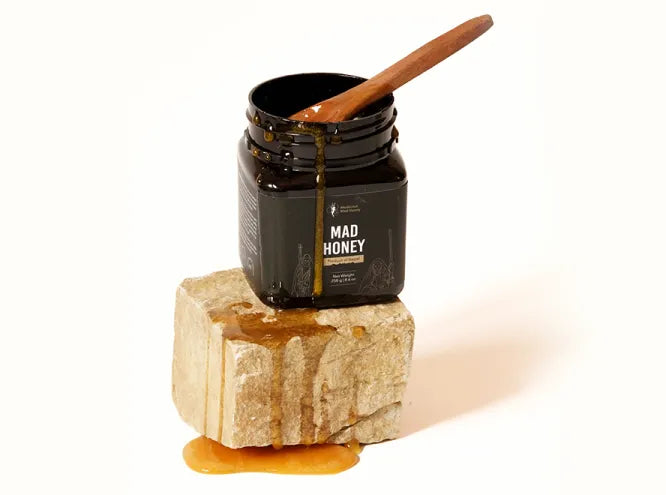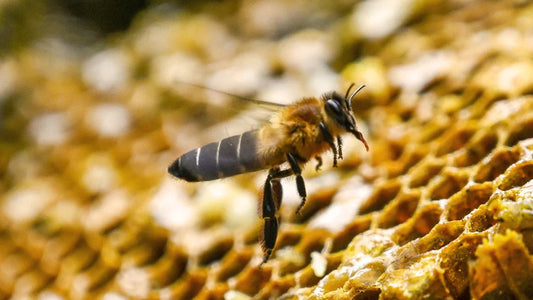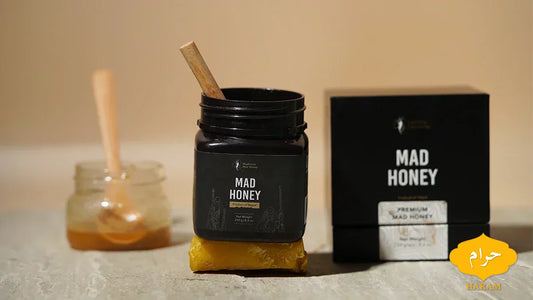We all know about mad honey and its maddening effects. But do you know about its alluring beginning? Where was it first found? Where was it first used? Where was first honey hunting done?
It’s all a fascinating anecdote when it comes to the history of this mystic nectar.
Today the origins of Mad Honey from Turkey and Nepal is considered as the primary source to the global supply but it's essential to learn the roots of the beginning. Although, there is no written statement of when was the official honey hunting conducted but the first historical record for the use of mad honey dates back to 401 BCE, Turkey.
Xenophon documented this peculiar incident with great detail making him the first writer to report mad honey intoxication to the world's literary record.
The Black Sea Region of Turkey
To unravel the captivating allure of mad honey’s enigmatic effects, you’ll need to journey back to the year 401 BCE. It was during this period that it captivated the curiosity of Black Sea region residents. One of the earliest accounts of mad nectar can be attributed to Xenophon of Athens, a Greek historian, soldier and student of Socrates. In his chronicle Anabasis, Xenophon recounted an incident from 401 B.C.E.
Following the Black Sea’s coastline, a Greek army under his command was returning to Greece that year after a successful campaign against the Persians. Near Trabzon, located in northeastern Turkey, the soldiers decided to indulge in local honey pilfered from nearby beehives. Little did they know it was mad honey containing Grayanotoxin for consumed but they consumed in substantial amounts.
After consuming overdose of this mad honeybee syrup, they experienced side effects of Mad Honey such as vomiting, diarrhea, disorientation and an inability to stand. However, by the next day, the effects were gone, allowing them to continue their journey to Greece.
Mad Honey and Romans Story
There is a famous story of Romans linked with the ancient history of the Mad Honey. Later, in between 65-70 B.C.E., in the Trabzon region of Turkey Roman soldiers had a less fortunate encounter with hallucinogenic liquid gold called as Mad Honey. Gnaeus Pompeius Magnus, also known as Pompey the Great, led his Roman army in pursuit of King Mithridates of Pontus and his Persian forces along the Black Sea.
The Persians strategically placed honey pots filled with local bee nectar for the Roman troops to discover. Upon discovering the honey pots, these Roman Troops started consuming the honey thinking it was regular raw honey but it was Mad Honey which needed dosage considerations. After consuming the honey, the Romans became disoriented and incapacitated, rendering them unable to fight effectively.
The Persian army returned and inflicted significant casualties on the Roman troops with minimal losses on their own side resulting in the deaths of over 1,000 Roman soldiers.
Learn What is Raw Honey and What makes it different from Mad Honey?
Story of Nepal's Mad Honey
Although the record of Nepal's Mad Honey is not within the historical books but there has been made vocal claims about the first harvest of Mad Honey from a district called Lamjung of a place called Gau Sahar. The story covers that there was a huge cliff full of hives of The Himalayan Giant Bees which was named as "Maha Bhir" in local Nepali Language or Honey Hill. An elder Gurung states, "Due to the availability of Mad Honey at abundance, one brave Gurung daredevil made the move and hence the first honey hunting was done 22 generations ago." The elder, Man bahadur Gurung aged 82 who once was the Hunter Himself speak about the achievement of his ancestor with pride.
After the first hunt, the Gurungs were so hyped with the hunt that they begin seeking other parts of the Lamjung and even on other districts of Nepal. For millennia, the Gurung tribe of Nepal practiced the art of harvesting and partaking in mad honey hunting and got famous as the Himalayan Honey Hunter of Nepal. This unique tradition has not only been a means of sustenance but also a livelihood for the Gurung Honey Hunters community. Also, they have utilized the harvested mad honey for treating health alignments locally. Until now, they used flimsy ropes and hand-made ladders to collect the honey. The process is completely traditional and the skills and knowledge are transferred from one generation to another. The bees that are in the making of Grayanotoxin containing sweet hallucinogenic syrup are known as the giant honeybees or Apis Laboriosa.
Not many knew about the existence of this mystic syrup, not even the Nepalese. It was later when the sensation of tourists and digital media that came to light. Many big media houses capture the story of the honey hunters and hallucinogenic honey. That is how the fame of mad honey rose in Nepal and around the world.
Mad Honey Today
Today, the scenario has slightly changed, as many people now know about mad honey and its health benefits. With the help of Internet the demand for Mad Honey product has increased significantly and ecommerce has helped drive the sales. The customers can order Mad Honey from almost all parts of the world and get it delivered within few days of the order.
Some have found a way to enhance their holistic wellness while some have found a natural way to induce high and euphoria with mad honey. The honey hunters of Lamjung are collaborating with mad honey sellers and earning a better sum. Sellers are selling in Nepal and outside Nepal in larger bulks.
The commercialization of Mad Honey from Turkey has led to more emphasis on the Mad Honey from Nepal. The climate and natural diversity has increased the potency found in the Grayanotoxin. Also, the adventurous honey hunting activity has aroused many foreign influencers and newspapers to come to Nepal for the honey hunting expedition to witness the captivating Nepalese honey hunting and to try the psychedelic honey straight from the hive.
Conclusion
People had misconceptions about mad honey being toxic and fatal. But the rumors and myths are slowly clearing out since people have come up with their own experiences and research. The health benefits of Mad Honey can't be ignored the same way the side effects of Grayanotoxin can't be ignored. Ancient History and local stories are intriguing but buying mad honey which is 100% original and authentic always comes first.
Research for the effects and benefits of Mad Honey is ongoing, also there has been recent findings that support the ancient history of Mad Honey. The archaeologists have discovered a 7,500-year-old cave painting depicting prehistoric humans gathering honey within the foothills of Iberian System Mountain Range in northeastern Spain. The drawing shows a figure climbing a rope ladder to reach a colony of the bees. Which clearly supports the ancient history linked with Mad Honey Harvesting.
Also Read: 7 myths and Facts about the Mad Honey





